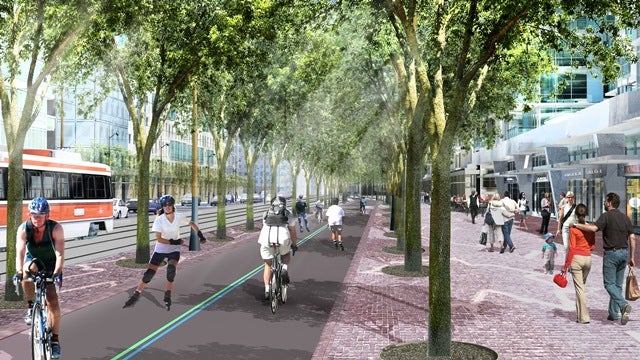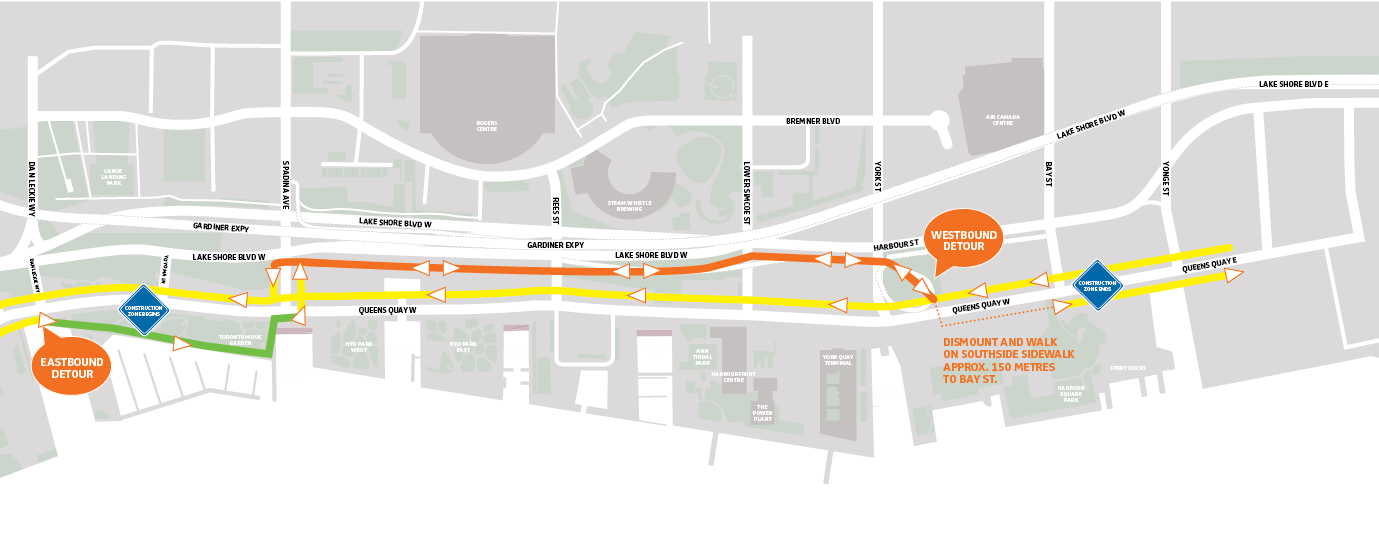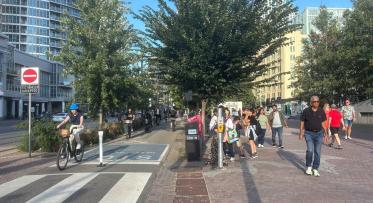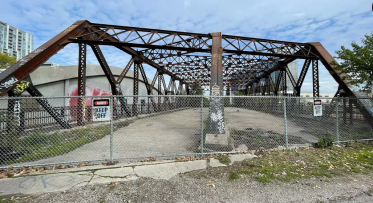Connecting Cycling Routes Along the Waterfront
Toronto's waterfront cycling paths offer great routes for getting downtown from west, east and north of the city.
POSTED: JUNE 24, 2014
BY: ANDREW HILTON
Being able to cycle to work is a great thing, both for the exercise and the freedom from packed subways and streetcars. Commuting by bicycle is even better when you can rely on a good, interconnected network of bike lanes and separated paths to get around easily and safely. I’ve had the good fortune to be able to bike to work in eight cities on three continents, and although Toronto isn’t the best of the lot (that spot belongs to Copenhagen), cycling in Toronto has got me thinking about how we design communities and make it easier and safer to get around by bike.
Part of Waterfront Toronto’s approach to building new communities is balancing all modes of transport. We place an emphasis on giving priority to pedestrians, cyclists and public transit vehicles because it’s more sustainable and makes for healthier, more active and less car-dependent communities. One way that we’re doing this is by creating bike trail connections across the waterfront, which contributes to the larger city-wide cycling network.
Along the eastern waterfront, there are a couple east-west multi-use trails that cyclists can choose from. The path along the north side of Lake Shore Boulevard East is a good choice for getting quickly from the east end of the city into downtown, as you can easily continue westbound on the Lower Don Trail that skirts the south side of the rail corridor, or on the Martin Goodman Trail that runs along the south side of Lake Shore Boulevard from Cherry Street and then along Queens Quay. For a more scenic route, you can bike along the Waterfront Trail that runs most of the way from Tommy Thompson Park and the Leslie Street Spit to Cherry Beach (with a bit of on-street cycling on Unwin Avenue), and then travel north to meet the connection of to the Martin Goodman Trail on Queens Quay. From points further north, the Lower Don Trail system connects you to these east-west trails near the intersection of Cherry Street and Lake Shore Boulevard East.

As part of the revitalization of Queens Quay, a new stretch of the Martin Goodman Trail is being constructed where there was none before.
One of the important connections that is currently under construction is the Martin Goodman Trail from Bathurst Street to Bay Street. Previously, cyclists riding in from the west along the separated trail were forced to ride in mixed traffic along a dysfunctional stretch of Queens Quay where they were constantly dodging illegally parked cars. Our work on revitalizing Queens Quay (on schedule to be completed in the Spring of 2015) is a huge undertaking, but the end result will be a much better street for everyone: A new promenade for pedestrians, a multi-use trail for cyclists, runners and rollerbladers, a streetcar right-of-way and an improved roadway with turning lanes and lay-bys to keep vehicular traffic moving.
Construction is always challenging and this summer it seems to be everywhere in Toronto. In many places, road construction could simply result in the temporary removal of bike lanes, pushing cyclists into traffic or forcing them to ride through a dangerous construction zone. For those cyclists who have to find ways around the Queens Quay revitalization construction, we’ve tried to make it better by creating a Cycling Detour to help cyclists skirt around the messier areas.
The Detour can be found between Spadina and York, beside the sidewalk on the south side of Lake Shore Boulevard and Harbour Street. This path also offers easy access to some key north-south streets in the area. However, please note that this path ends at York Street – meaning there is no bike route between York and Bay Streets. Cyclists need to dismount and walk east on Queens Quay to Bay Street – about 150 metres – to connect to the eastern portion of the Martin Goodman Trail.
It’s not perfect, but with so much construction in the area there really are no other options to for such a route. Still, the detour requires caution. It was an old trail that went unmaintained for many years. In many sections it is shared with pedestrian traffic, so you’ll need to yield to them. But, for a cautious cyclist it does provide a safer alternative route than trying to ride through an active construction zone. For those cyclists going westbound in the area, there is still the option of riding on Queens Quay which has been reduced to one westbound lane with a reduced speed limit of 30km/hr.
 A cycling detour helps cyclists get around the construction zone on Queens Quay. Though the path is separated from traffic for most of the route, cyclists should continue to use caution and yield to pedestrians.
A cycling detour helps cyclists get around the construction zone on Queens Quay. Though the path is separated from traffic for most of the route, cyclists should continue to use caution and yield to pedestrians.
Because of the construction in this area, some cyclists have been riding on the sidewalk along Queens Quay (where the sidewalks are narrowed in many places due to construction), which not only endangers the many pedestrians using the sidewalks, but also shows a clear lack of civility and respect that unfortunately tarnishes all cyclists. So please respect the rules and the signage for cyclists on the waterfront and use the road or the marked bike paths – or dismount and walk your bike.
There has never been a continuous bike trail across Queens Quay West from Bathurst to Bay Streets, but soon there will be. I can think of few places in Toronto more deserving of a bike path than this section of Queens Quay; the revitalization project, when finished, will result in a continuous Martin Goodman Trail right across the waterfront and will mean that bikes will get an equal and separated footprint in the area, right next to the sidewalk and the streetcar right-of-way. This not only signals the importance of balancing transportation modes – including cycling – but will be safer, faster and more enjoyable for everyone.
We’re working to bring change to Toronto’s waterfront – and while construction is underway we’re working to provide as much access as possible for cyclists. We have less than a year to go before we unveil the new Queens Quay, and it will continue to be challenging area for cyclists until then – but in the end, we hope you’ll agree that it’s worth it.




